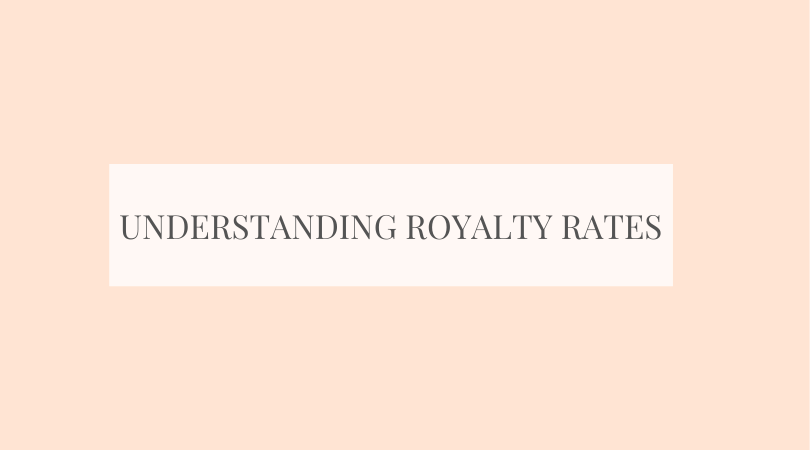Note: This is not legal advice and is provided for information purposes only. If you are in need of legal advice, please consult with an attorney who can provide specific legal advice to meet your needs.
The royalty is the percentage amount a publisher pays to you based on sales of your
book. I’m often asked, “What is a good royalty rate?” and the answer is it depends. Royalties can
vary wildly. I have seen royalties as high as 80% to as low as 10%. Sometimes, the lower royalty
can actually be a better deal. The reason: it all depends on how the royalty is calculated.
Typically, the royalty being paid will be subject to some sort of offset. Usually, this will
be defined in the contract as Net Sales, Net Profits, or something similar. The offset is the
expenses the publisher is allowed to recoup, and thereby deduct, out of your royalty rate from the
amounts it has received. It often includes shipping, printing, and advertising costs. I have also
seen it include personnel costs, insurance costs, storage costs, and so on. If an advance was
received, any royalty payments will also be withheld until the advance has been paid back.
I have also seen royalties that are based on the cover price of the book being sold, and
also just based on amounts received in connection with the work. No offsets, other than
advances, are taken by the publisher.
It is incredibly important to know and understand what the royalty will be based on. Not
all publishing agreements clearly spell out what can be offset against the royalty payment,
namely, they won’t include a definition of Net Sales. They might list the royalty to be paid
followed by a lengthy list of items they can recoup.
When I review publishing agreements, I try to limit the amounts being claimed as much
as possible. In my opinion, if a publisher is offsetting the amount received, it should only apply
to verifiable, third-party expenses incurred in connection with the work.
So, how does the math work out? I’ll do my best to illustrate. I’m going to try and use
round numbers for ease. These figures will likely differ from what you might see.
METHOD 1: Let’s say you negotiate a 50% royalty off of Net Sales with a publisher.
They define Net Sales as the amount they receive from sales of the book, but they can deduct
shipping, advertising, and printing costs before calculating the royalty. We’ll assume a small
print run of 1,000 copies at $0.80 a copy. Total cost of printing (and for the sake of ease we’ll
include shipping): $800. Usually, Diamond Comic Distributors (“Diamond), the primary
company who distributes comic books to comic book stores, pays 60% off of cover price. Assuming
the cover price is $3.99, that is $1.60 going to the publisher for each copy sold to Diamond. Let’s
assume the entire print run sells out through Diamond. The publisher has received $1,600 for the
book. Now, it can deduct printing, shipping, and advertising. We already stated the printing and shipping will be $800. For our example, the publisher did not spend any money advertising your
book. In total, the publisher has received $800, and you will receive $400 from this run.
METHOD 2: Now, let’s assume the publisher pays you 50% of whatever they receive
without deductions. Assuming 1,000 copies sold, they would receive $1,600 from Diamond.
Your split would be $800.
METHOD 3: Finally, let’s say you negotiate a 15% royalty off of the retail price of the
books sold. Again, assuming all 1,000 copies sold at $3.99 a book, you would receive $0.60 per
book sold. In this scenario, you would make $600. The publisher does not deduct anything from
this royalty amount.
Method 1 is probably the most common royalty rate I’ve seen for creator-owned
publications. However, the deductions can vary greatly. It is entirely possible for the deductions
to exceed what the publisher earns, and therefore creators might not receive a royalty rate under
this method. Method 2 I’ve seen from newer publishers who are utilizing newer models to do
hybrid creator-and-publisher owned books or buying the creator’s rights. Method 3 is more in
line with traditional publishing.
As you can see, how the royalty rate is calculated can make a big difference. Publisher
definitions of royalty rates and Net Sales can vary wildly. It is important to pay attention to how
these terms are defined, what deductions can be taken, and understand how you will be paid.
2020-01-29 Correction: An earlier version of this post contained an error stating Diamond pays 60% off cover price. It has been corrected to state Diamond pays 60% off of cover price.
- Understanding Royalty Rates - January 29, 2020
- Comic Book Law: An Introduction - June 25, 2018

This is super helpful and illuminating, thank you!